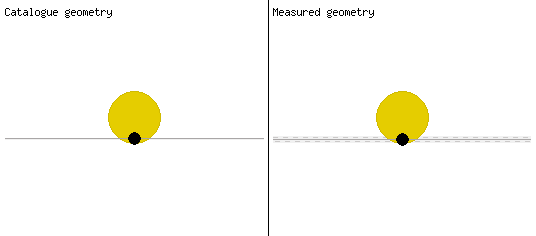Australian skies don't let you down
tl;dr - Last week, three members of our school's astronomy group observed the exoplanet TIC 46432937 b using a remote telescope in Southern Australia. The light curve turned out exquisit and was promptly submitted to the TRESCA database. Our successful observation constitutes a valuable contribution to the understanding of extrasolar planets.
Clear autunm skies are usually the best for astronomy. Looking up into the vast blue, you could easily feel drowning. However, not this year. Up to now the first three weeks of September were quite wet, again with an indisputable drowning risk. Luckily, as a local folk song states, the world is "groß und weit", and so the two freshly recruited members of the astronomy group, Magdalena and Miriam, didn't have to wait too long for their first mission. They teamed up with senior astronomer Alex and used a remote telescope in Australia to successfully prey their first exoplanet.
The target, TIC 46432937 b, was only recently discovered by the TESS satellite. With its four wide-field cameras, TESS ploughs through the night sky, constantly looking for the signal of an exoplanet transit - a tiny yet periodic dip in brightness, the telltale sign of a distant world going round its star.
TIC 46432937 b, the name does certainly not sound melodious. Exoplanet names are at best an acquired taste. Nevertheless, behind this acronym stands a quite compelling representative of its kind. With a mass that is over three times bigger than Jupiter's, it is able to dim the light of its host star by 56 mmag, almost 5%. The star, on the other hand, is a dwarf, a so called red dwarf to be precise. A star of spectral type M with a small radius (about half that of the Sun) and a relatively cool surface of about 3,400 °C.
Small star + large planet = deep brightness dips. And that's what we saw.
 |
| The light curve of the exoplanet TIC 46432937 b. The lower curve has the linear trend removed. |
 |
The exoplanet host star TIC 46432937 in the Southern constellation Lepus (The Hare). |
 |
| The three astronomers during their remote observation run. From left to right: Alex, Magdalena and Miriam. |
 |
| The geometry of the transit as expected (left) and measured (right). |


Kommentare
Kommentar veröffentlichen